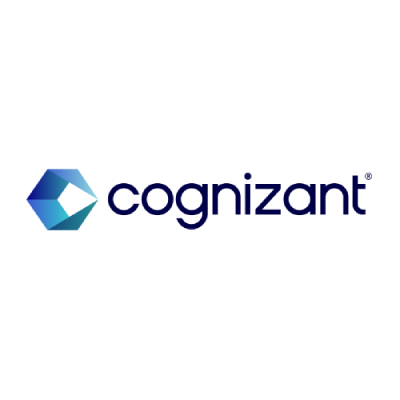Launched in 2019, Tyl is NatWest's merchant acquiring business. Constantly evolving to become a cutting-edge payments company, Tyl was the first to market with Tap to Pay in the UK.
Cognizant’s Banking & Financial Services team recently conducted a strategic engagement to help Tyl understand the future growth and potential opportunities of the Tap to Pay market.
Tap to Pay software uses Near-Field Communication (NFC) technology built into Android and iOS smartphones/tablets to enable merchants to securely accept payments without any additional hardware. Its adoption has been rapid in 2023, propelled by the release of the software on iOS.1 Juniper Research even predicts that Tap to Pay will reach a global user base of 34.5 million by 2027, a 5x increase from current levels.2 However, little is understood of the impact it will have on the cards and payments industry.
So, what impact will Tap to Pay have on the payments industry? We believe it presents an opportunity for merchant acquirers and payment providers to reinvent their business. Tap to Pay offers a superior payment experience for consumers and is likely to bring the speed, security, and convenience of contactless payments to a wider range of merchants. It also enables merchants to start accepting payments without having to wait for hardware to be delivered and without having to pay for the maintenance of additional hardware (either as a one-off charge or monthly rental payments), reducing the time taken to get them in operation.
In this article, we argue that the emerging technology’s adoption is poised to grow considerably, altering payment acceptance for consumers and retailers alike. Three key trends underpin this growth:
1. NFC-enabled iPads will enhance product adoption, notably in the sales industry:
NFC-enabled iPads will transform how Tap to Pay currently operates. Tablets are already a key tool for salespeople, with 42% of professionals using them to enhance productivity (e.g., inventory management/search tools),3 as well as improve the in-store customer experience. Customers also perceive them to be more “professional” than smartphones. Tap to Pay has as much, if not more, potential in the tablet universe as the smartphone universe. Yet, there are currently less than five NFC-enabled tablets on the market, and all are Android models.4
Industry insiders believe Apple will release an NFC-enabled iPad in 2024.5 This stems from the increasing financial incentives for Apple to integrate businesses more tightly into its broader services ecosystem. It has the potential to open up a range of use cases across the sales industry which would entice businesses to move away from their traditional POS setup. On a busy day, Tap to Pay could provide merchants additional “queue-busting” POS capacity, which would enable sales staff on the shop floor to provide end-to-end customer service, from checking inventory to completing POS checkout, and would save time for the retailer and customers, ultimately resulting in increased sales. The luxury brand market, sales reps “out in the field”, and trade shows/exhibitions will likely seek to leverage this innovation immediately. With Apple selling around 600 million iPads since 2010,6 the innovative arrival of NFC-enabled iPads is expected to propel Tap to Pay’s adoption.
2. Tap to Pay will empower the growth of personal services, reducing barriers to entry:
When identifying the growth areas within the UK micro and SME market, we found that the three fastest growing segments over the coming years are forecast to be within personal services. The Institute of Fiscal Analysis indicates these will be hairdressers, beauty parlours, sports & fitness personal trainers, as well as mobile food stalls.7 These small businesses are likely to find a simple, low-cost way to accept card and mobile wallet payments, without additional hardware, very appealing. Tap to Pay is hence perfectly placed to benefit from this trend because it breaks down barriers in traditional retail and services industries, enabling businesses to avoid high setup costs and ongoing POS terminal renting. While there are payment providers who offer to waive terminal fees on a case-by-case basis, businesses are looking for simpler ways to accept payments. Tap to Pay provides a distinctive advantage since, instead of providing new devices for their employees, companies can now simply request them to download an app onto their smartphones. However, this may require merchants to incentivise their employees to use their personal smartphones. Tap to Pay can also be made richer by integrating it with some basic business tools that micro-merchants need to run their day-to-day business. It therefore drastically lowers the barriers to entry for startup and SME businesses which are expected to steadily grow in the UK over the next five years,8 thereby encouraging entrepreneurship and investment. For payment providers whose current merchant onboarding is lengthy and complex, success will also depend on offering a simplified onboarding and ensuring their credit risk models are optimised to include micro-merchants.
3. High-end retailers will look to adopt the technology:
While Tap to Pay is currently ideally suited to SME merchants, we expect larger UK retailers (e.g., Currys) to incorporate it within their future checkout experiences. Optimising a personalised checkout experience presents a significant opportunity for three reasons. First, enterprise merchants typically have higher transaction volumes and a larger average basket value than SME merchants, thereby generating greater revenues for Tap to Pay providers. Having launched Tap to Pay in July 2023, big players such as Revolut are already looking to enter this market to capitalise on this opportunity. Second, larger retailers can benefit from the latest technology stack because many currently have an outdated, lengthy, and unintuitive one. Provided that larger retailers have the right infrastructure to support integrated, seamless, and streamlined processes, Tap to Pay opens the opportunity to create end-to-end payment capabilities anywhere in-store (instead of only at sales desks). This would alleviate peak-time queues, improve the customer experience, increase the conversion of baskets into purchases, and reduce the reliance on expensive hardware. However, high-end retailers must first take the end-to-end checkout experience into account when designing a solution based on Tap to Pay. Third, it enables larger companies to lower investment costs by repurposing existing Android hardware, e.g., Datalogic “memor” devices for stock management and inventory control.
Whether Tap to Pay gains the level of traction we expect will depend on an effective communication of its benefits, as well as transparent and competitive pricing combined with a slick, best-of-breed onboarding process that delivers against the promise held out by the proposition: getting merchants in operation and accepting payments more quickly without additional hardware. However, the early indications are positive with SME business owners keen to adopt the technology, and consumers comfortable to use it in geographies such as Australia and the US. The future certainly looks bright.
For more insights, visit the Banking section of our website or contact us.
[1] https://www.juniperresearch.com/press/soft-pos-users-to-grow-globally-by-2027
[2] Ibidem.
[3] https://www.pipedrive.com/en/blog/ipad-productivity
[4] https://www.nfcread.com/en/ipad-passport-reader.
[5] Market Survey, Cognizant Research, July 2023
[6] Apple has sold a total of 500 million iPads in the last 10 years | AppleInsider
[7] Giulia Giupponi and Xiaowei Xu, “What does the rise of self-employment tell us about the UK labour market?”, Institute for Fiscal Studies, 2020, BN-What-does-the-rise-of-self-employment-tell-us-about-the-UK-labour-market-1.pdf (ifs.org.uk)
[8] Cognizant Research, July 2023














